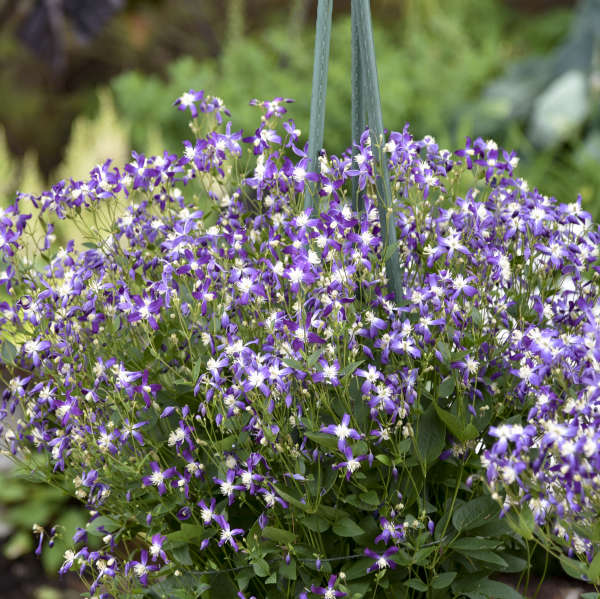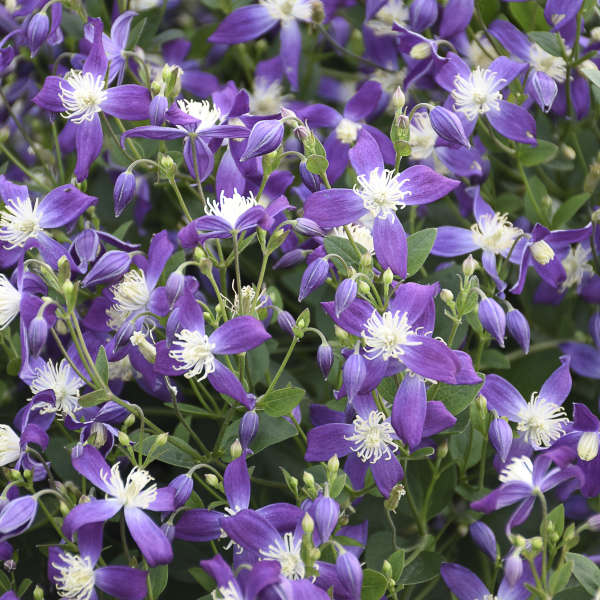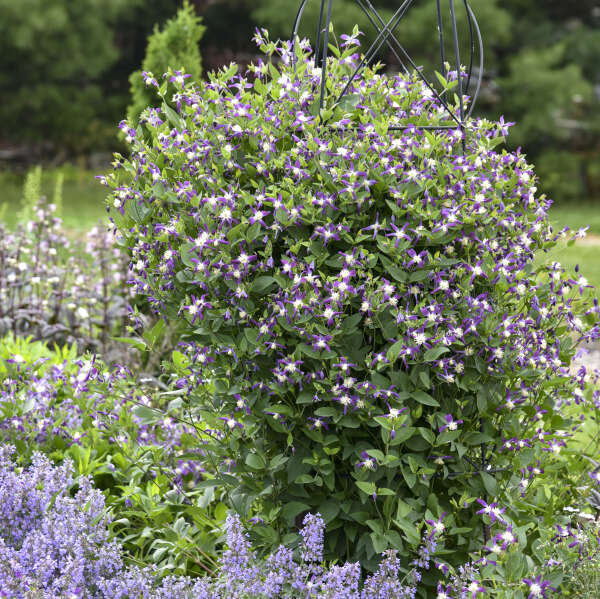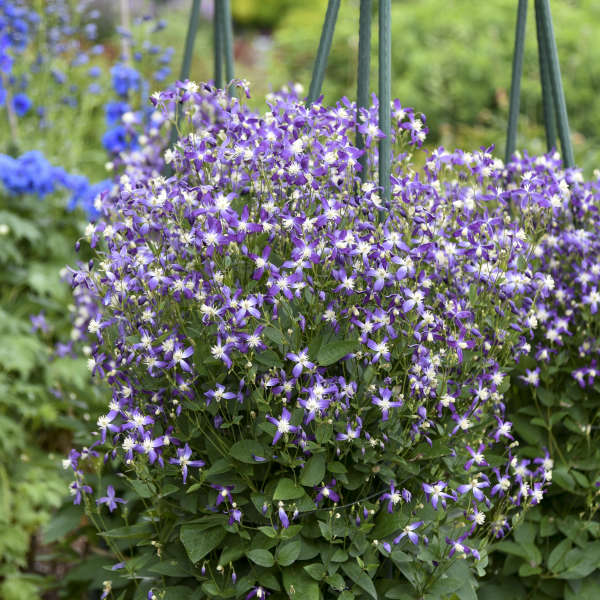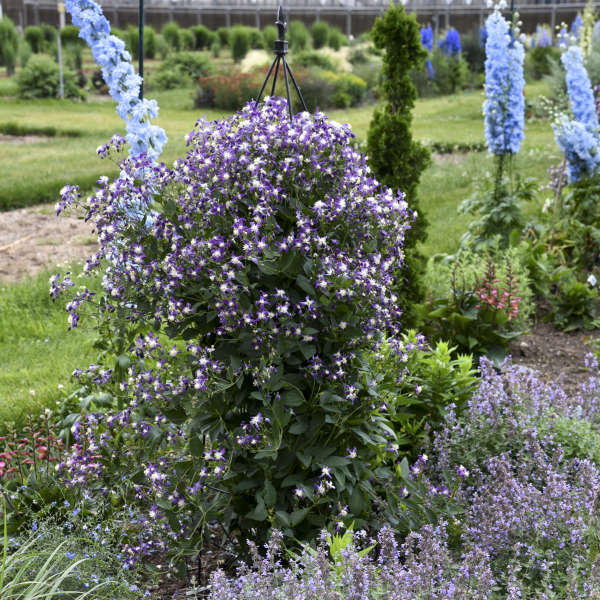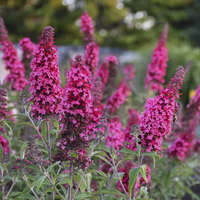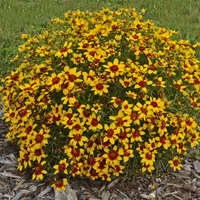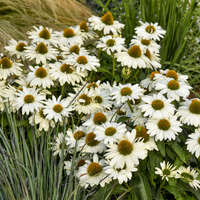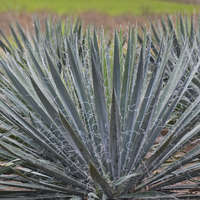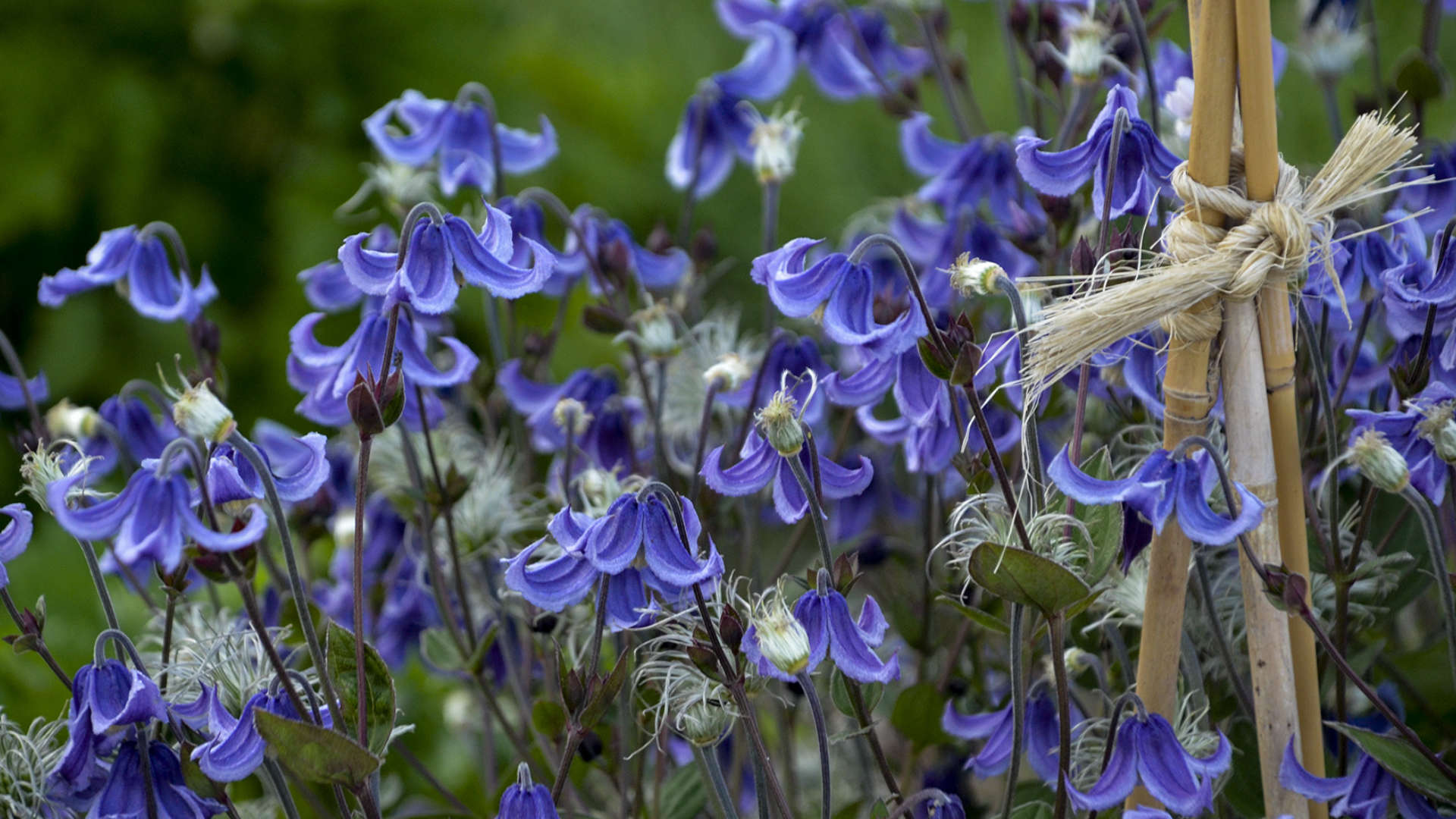Clematis 'Violet Stardust' PP30555
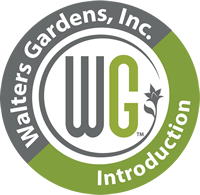
Common Name: Bush Clematis
This broad leaved hybrid Clematis is a cross between two distinct species, giving it a unique look and performance in the garden. The clump is covered with a profusion of small 1½", blue violet, four to five-petaled, star-shaped nodding flowers. The centers of the flowers have creamy white anthers that contrast beautifully with the petals. Although this is a non-vining Clematis, the plant will benefit from support, either from staking or from neighboring plants. If allowed to ramble without staking, it will spread to 38-40" wide.
